Interview: The mysteries of sleep revealed
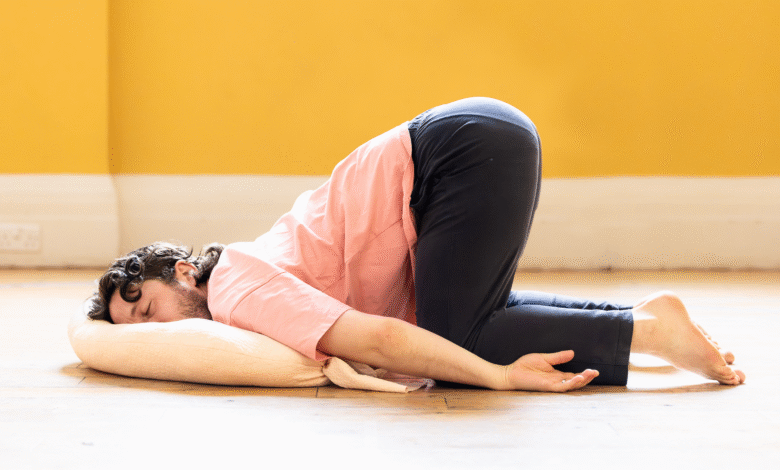
Daphna Attias on devising The Sleep Show
Yawn! I don’t know about you but I just love sleep – it’s definitely one of my favourite things and I’d really like much more of it! For children and their families, however, it’s a particularly important part of their everyday lives and relationships. This season Peut-Être Theatre are touring The Sleep Show, a production for ages 4+ which explores ideas of sleep, how it works and why we need it. We were keen to learn more, so who better to relate this bedtime story than Artistic Director Daphna Attias? We stopped by for a chat with milk and cookies.
Daphna, thank you so much for taking time to tell us about The Sleep Show. Why did you want to make a show about sleep in the first place?
I’ve always been fascinated by what happens to us when we sleep — it’s such a universal, mysterious, and essential part of life, yet we rarely talk about it with children beyond “it’s time for bed.” My relationship with sleep has changed a lot over the years, especially as a mother. When my children were babies, sleep felt like a rare and precious thing — I remember desperately trying to stick to routines, functioning on just a few hours a night, and feeling that constant mix of exhaustion and wonder. As they grew older, bedtime became its own little drama — stories, songs, negotiations, and sometimes long nights when they just couldn’t fall asleep. Watching how their sleep has evolved at different stages made me realise how deeply it’s connected to growing and feeling safe. I wanted to make a show that explores all those layers — the beauty, the chaos, and the calm — and invites children and their grown-ups to snooze and dream together.
Can you tell us about the research process for creating the show?
Our devising process always starts with curiosity. For The Sleep Show, we wanted to understand sleep from both scientific and emotional perspectives, so we worked with an incredible group of experts. Professor Matt Jones, a neuroscientist from the Sleep Lab at the University of Bristol, helped us explore what happens in the brain and body as we drift through the different stages of sleep. Helen Rutherford from The Sleep Charity shared insights into families’ real-life experiences with bedtime routines and sleep challenges. We also interviewed Professor of Sleep and Cognition Caroline Horton from DrEAMSLab, whose research into dreams and memory inspired some of the show’s more poetic moments. And Matthew Davies, Chief Sleep Physiologist at Great Ormond Street Hospital, offered a unique perspective on how sleep affects children’s health and recovery.
All of these conversations and discoveries became creative sparks for the devising process. We translated what we learned into movement, sound, rhythm, and imagery — so the science and the emotion of sleep are woven together throughout the performance.
What did you discover about children and their relationship with sleep?
It’s complex! We discovered that children often have a very emotional relationship with sleep. Many don’t want to be the last to fall asleep — there’s this deep curiosity and fear of missing out, as if the world keeps spinning without them. For some children, sleep is connected with anxiety — the darkness, the stillness, or being alone can feel unsettling. For others, it’s a moment of joy and comfort, a time for stories, cuddles, and safety.
We also learned just how important routines are — both for going to sleep and for waking up. Those small rituals help children (and adults!) find rhythm and security in their days. And perhaps most interestingly, we saw how sleep changes dramatically at every stage of life — from babies’ frequent naps, to the wild dreams of childhood, to the shifting sleep patterns of teenagers. The show embraces all these changes with playfulness and compassion, celebrating the way sleep connects us all, even as it constantly evolves.
How does the show engage families in thinking about the subject?
We wanted families to feel like participants, not just observers. The piece has moments that are immersive and sensory — it invites children and grown-ups to breathe, to move, to rest, to imagine together. We reflect familiar bedtime moments that everyone recognises — the endless excuses not to go to sleep, the contagious yawning, even the funny sounds of snoring. By making these moments playful and joyful, we open up a space where families can laugh and connect over something so ordinary yet so meaningful.
We also invite families to join us on stage to physically explore different sleep positions and help us create parts of the choreography. They are also invited to drift off and relax as we sing them a lullaby; it becomes a shared experience.
The Sleep Show is touring widely with public performances across England, but is also being performed in some hospitals. Can you tell us about that?
Yes, and it’s something I’m particularly proud of. Performing in hospitals has been a big part of Peut-Être Theatre’s ethos for over a decade. We believe that creativity and imagination should be accessible to all children — wherever they are — and we try to bring all our shows to children’s hospitals whenever possible. Sometimes that means performing a full section of the show right at a bedside one on one, and other times it’s in a waiting room or shared space.
We work closely with hospital staff and play specialists to adapt each performance to the environment — every setting is unique, and it’s important that the experience feels sensitive and safe for each child. For The Sleep Show, we also invited the Head of the Hospital School at St George’s Hospital into our rehearsal process to consult on accessibility and help us think about how to make the show truly work in hospital contexts.
These performances are often some of the most moving. Sleep and rest can be especially challenging in hospitals, so we hope the show offers a moment of calm, imagination, and comfort — a small dreamscape in the middle of a busy and clinical space.
What are you hoping that children and their families will take away from the show?
I hope they leave feeling soothed, connected, and a little more curious about their own sleep and dreams. I’d love for families to find small moments of calm together — maybe a new bedtime ritual, or simply the permission to slow down. Most of all, I hope it reminds us that rest is not just something we have to do — it’s something magical that helps us grow, heal, and dream.
Thanks very much to Daphna for telling us all about this lovely production. The Sleep Show is touring to multiple locations from Friday 17 October to Sunday 8 March.
- Wednesday 22 October: Attenborough Arts Centre, Leicester (11am & 2pm)
- Saturday 25 October: Half Moon Theatre, London (11am & 2pm)
- Friday 31 October: Pontio Arts Centre, Bangor (10:30am & 1pm)
- Saturday 7 – Sunday 8 February: The Egg, Bath (11:30am & 3pm)
- Friday 13 – Saturday 14 February: South Street Arts Centre, Reading. (Fri: 10.30am & 1.30pm. Sat: 11.30am & 2pm)
- Friday 27 – Saturday 28 February: The Hullabaloo, Darlington (11am & 1pm)
- Sunday 8 March: Lakeside Arts, Nottingham (11am & 2pm)


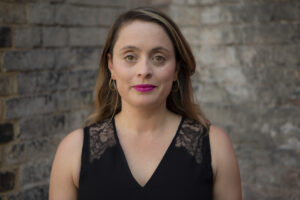

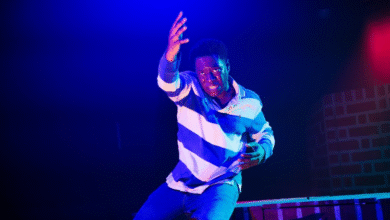
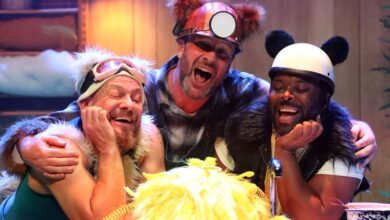
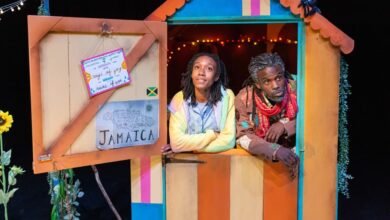
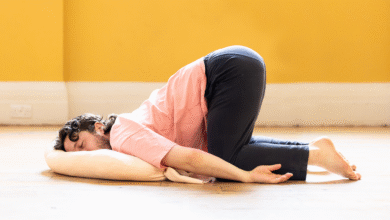
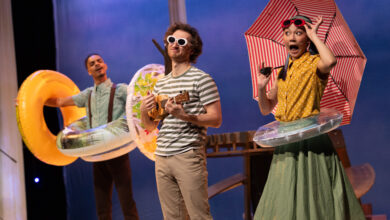
One Comment